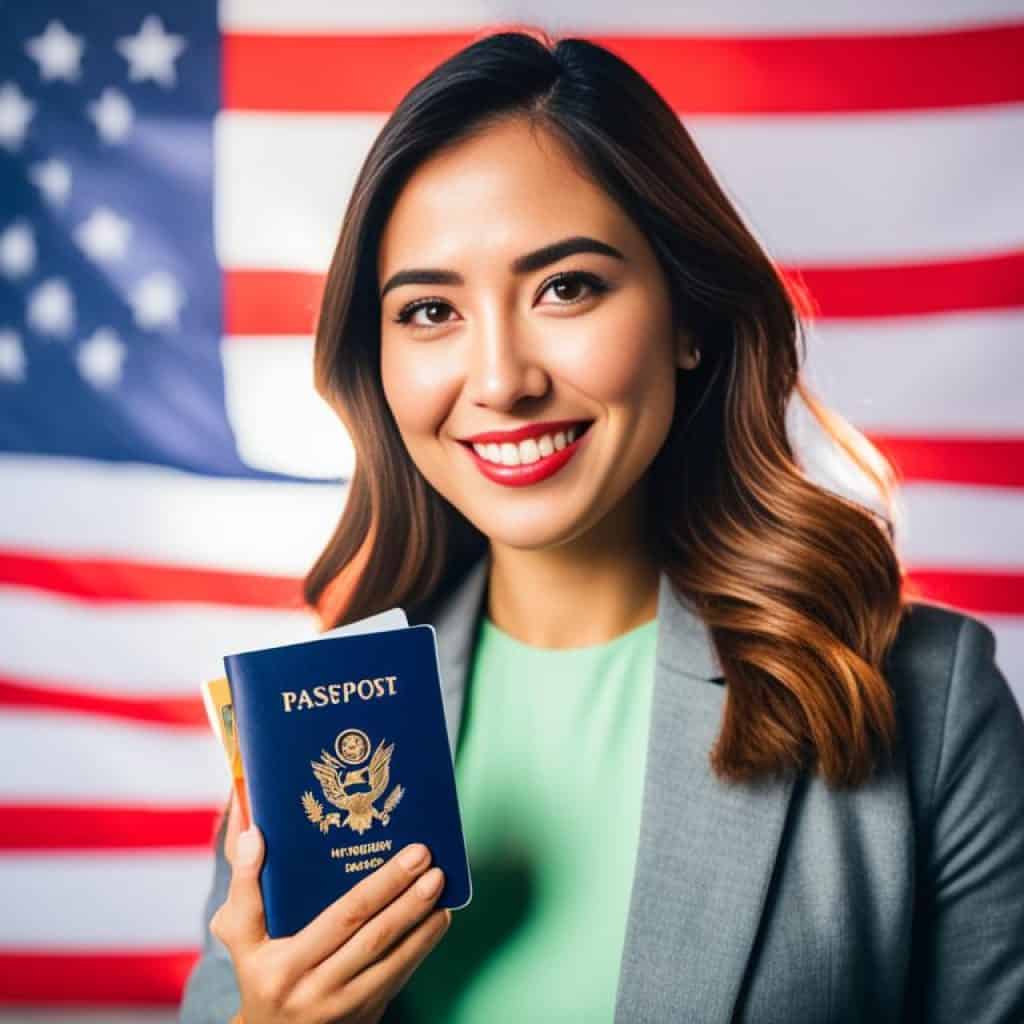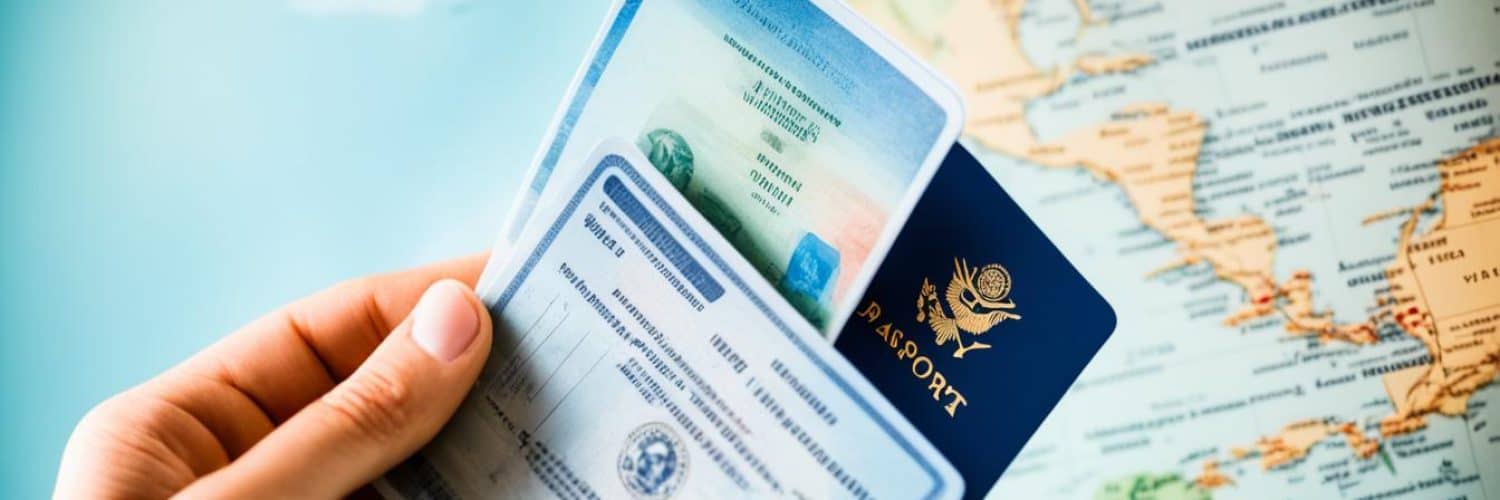Are you eager to bring your Filipina wife to the United States? The process may appear daunting, but with the right knowledge and guidance, it can be a smooth and achievable endeavor. From understanding the visa options to gathering the necessary documents, we’ll provide you with a comprehensive guide to help you navigate the path to reunite with your spouse in the US.
Immigrant Visa for a Spouse of a U.S. Citizen (IR1 or CR1)
To bring your Filipina wife to the US as a spouse of a U.S. citizen, you need to file an Immigrant Petition for Alien Relative (Form I-130). The petition is filed by the U.S. citizen spouse at a USCIS office in the United States. The U.S. Embassy in Manila accepts and adjudicates these petitions for residents of the Philippines. Once the petition is approved, your wife can apply for an immigrant visa under the Family-Sponsored category. The specific requirements and documents needed for the visa application will be provided by the National Visa Center (NVC) after the petition is approved.
If you’re ready to begin the process of bringing your Filipina wife to the US, follow these steps:
- Complete Form I-130: As the U.S. citizen spouse, you’ll need to fill out Form I-130, Petition for Alien Relative. This form establishes the relationship between you and your wife and confirms your eligibility to sponsor her.
- Gather Supporting Documents: Along with Form I-130, you’ll need to include supporting documents such as proof of your U.S. citizenship, proof of your marriage to your Filipina wife, and any evidence that strengthens the validity of your relationship.
- Submit the Petition: Once you’ve completed Form I-130 and gathered the necessary supporting documents, you can submit your petition to the USCIS. Be prepared to pay the filing fee and any other required fees.
- Attend the Interview: After the USCIS approves your petition, the NVC will schedule an interview for your wife at the U.S. Embassy in Manila. During the interview, she will need to provide additional documentation to prove her eligibility for an immigrant visa.
- Receive the Visa: If the U.S. Embassy approves your wife’s visa application, she will receive an immigrant visa in her passport. This visa allows her to travel to the United States and become a lawful permanent resident upon arrival.
The process of obtaining an immigrant visa for a spouse of a U.S. citizen can be complex. It’s important to carefully follow the instructions provided by the USCIS and the U.S. Embassy in Manila to ensure a smooth and successful application. If you have any questions or need assistance, consider consulting with an immigration attorney or utilizing the services of a reputable immigration agency.
Nonimmigrant Visa for Spouse (K-3)
If you are a U.S. citizen and your Filipina wife is not yet in the U.S., you can also apply for a nonimmigrant visa for a spouse, known as the K-3 visa. This visa allows your wife to join you in the U.S. while the immigrant visa application is being processed.
To apply for the K-3 visa, you need to file a Petition for Alien Relative (Form I-130) and a Petition for Alien Fiancé(e) (Form I-129F). The application must be filed in the country where the marriage took place. Once the visa is issued, your wife can travel to the U.S. to wait for the processing of the immigrant visa case.
Key Steps for Obtaining a K-3 Visa:
- File a Petition for Alien Relative (Form I-130) and a Petition for Alien Fiancé(e) (Form I-129F) in the country where the marriage took place.
- Wait for the petitions to be processed and approved by the USCIS.
- Once the petitions are approved, the case will be forwarded to the National Visa Center (NVC) for further processing.
- Complete the required forms and submit the necessary documents to the NVC.
- Attend the visa interview at the U.S. Embassy in Manila.
- If approved, your wife will receive the K-3 visa and can travel to the U.S.
It is important to note that the K-3 visa is temporary and valid for two years. During this time, your wife can apply for a work permit (Employment Authorization Document) and travel document (Advance Parole).
Bringing your Filipina wife to the U.S. with a K-3 visa can provide an opportunity for her to join you in the country while waiting for the immigrant visa process to be completed. This can help minimize the time spent apart and allow you to start building your life together sooner.
K-3 Visa Documents Checklist:
| Document | Notes |
|---|---|
| Passport | Ensure the passport is valid and has at least six months of validity remaining. |
| Form I-130 | Completed and signed by the U.S. citizen spouse. |
| Form I-129F | Completed and signed by the U.S. citizen spouse. |
| Marriage certificate | Original or certified copy of the marriage certificate. |
| Photo of the couple | A recent photograph showing the couple together. |
| Proof of ongoing relationship | Evidence of shared finances, communication, and joint commitments. |
| Medical examination | Your wife will need to undergo a medical examination by an approved physician. |
| Police clearance | Obtain police clearances from all countries your wife has lived in for more than six months since the age of 16. |
| Financial documents | Evidence of your ability to financially support your wife in the U.S. This may include tax returns, bank statements, and employment letters. |
By thoroughly preparing the required documents and following the proper application process, you can increase your chances of obtaining a K-3 visa for your Filipina wife, allowing you both to be together in the U.S. while waiting for the immigrant visa process to be completed.
Fiancé(e) Visa
If you are a U.S. citizen and not yet married to your Filipina partner, you can apply for a fiancé(e) visa, known as the K-1 visa. This visa allows your fiancé(e) to come to the U.S. to marry you within 90 days of arrival. To apply for the K-1 visa, you need to file a Petition for Alien Fiancé(e) (Form I-129F).
Once the visa is issued, your fiancé(e) can travel to the U.S. to marry you. After marriage, your wife can then apply for a green card to become a permanent resident of the U.S.

Applying for a fiancé(e) visa is a crucial step in bringing your loved one to the United States. It provides an opportunity for both of you to start your life together as a married couple, living and building a future in the U.S.
With the K-1 visa, you and your fiancé(e) can plan and prepare for your upcoming wedding, knowing that the necessary legal requirements are met. The visa offers a pathway for your fiancé(e) to join you in the U.S. and eventually become a permanent resident.
| Advantages of the Fiancé(e) Visa (K-1) | Considerations for the Fiancé(e) Visa (K-1) |
|---|---|
|
|
“The K-1 visa gave us the opportunity to plan and have our dream wedding in the U.S. It was the first step towards building a life together in America. We are grateful for the K-1 visa and the chance to be together.” – John and Maria
Adjusting Status for Filipino Spouse
If your Filipina spouse is already in the U.S. on a nonimmigrant visa or as a fiancé(e), she may be eligible to adjust her status to become a permanent resident. This adjustment of status process allows her to stay in the U.S. without the need to leave the country.
To initiate the adjustment of status, you need to file an Application to Register Permanent Residence or Adjust Status (Form I-485). This form must be submitted to the U.S. Citizenship and Immigration Services (USCIS) while your spouse is physically present in the U.S.
The adjustment of status process requires careful attention to detail and the submission of the necessary documents. These documents may include:
- Proof of your spouse’s lawful entry into the U.S.
- Evidence of the marital relationship, such as marriage certificate, joint financial documents, and photographs together
- Proof of eligibility for adjustment of status, such as medical examination, vaccination records, and an Affidavit of Support (Form I-864)
- Fingerprinting and biometric information
Once the application is submitted, USCIS will review the case and schedule an interview for the applicant and the sponsoring U.S. citizen spouse. The purpose of the interview is to assess the legitimacy of the marriage and determine the eligibility for adjustment of status.
If the adjustment of status application is approved, your Filipina spouse will receive a Green Card, officially known as a Permanent Resident Card. This card grants her the right to live and work permanently in the United States.
It is crucial to ensure that all documents and forms are accurately completed and submitted within the given timelines. Seeking the guidance of an experienced immigration attorney or utilizing the services of a reputable immigration agency, like Boundless, can greatly simplify the adjustment of status process and increase the chances of a successful outcome for your spouse.
With the adjustment of status approved, your Filipina spouse can fully embrace her new life in the United States, enjoying the benefits and opportunities that come with permanent residency.
| Advantages of Adjusting Status | Disadvantages of Adjusting Status |
|---|---|
|
|
Marriage Visa for Philippines-US Spouse
If you are a U.S. citizen and already married to your Filipina spouse, you can apply for a marriage-based visa to bring her to the U.S. This visa allows your spouse to become a permanent resident of the U.S. and start a new life together.
To apply for the marriage visa, you need to file an Immigrant Petition for Alien Relative (Form I-130). This petition establishes the relationship between you and your spouse and confirms your intention to live together in the U.S. The petition should be filed with the U.S. Citizenship and Immigration Services (USCIS) office.
Once your petition is approved, your spouse can proceed with the immigrant visa application. The National Visa Center (NVC) will provide you with further instructions and a list of required documents. It is essential to ensure all documents are accurately completed and submit them promptly to avoid delays in the visa processing.
During the application process, your spouse may be required to attend an interview at the U.S. Embassy in Manila. The interview is an opportunity for the embassy to verify the authenticity of the relationship and assess the eligibility for a visa.
Once your spouse arrives in the U.S. on an immigrant visa, they will be granted a Green Card, officially known as a Permanent Resident Card. This card proves their permanent residency status and allows them to live and work in the U.S. indefinitely.
It is important to note that the marriage-based visa process can be complex and time-consuming. Working with an experienced immigration attorney or utilizing the services of a reputable immigration service provider, such as Boundless, can greatly simplify the process and increase your chances of success.
By obtaining a marriage visa for your Filipina spouse, you can fulfill your dream of being together in the United States and building a new life as a married couple.
Required Documents for Visa Applications
When applying for a visa for your Filipina wife, there are several required documents that must be submitted. These documents are crucial for the US embassy requirements for Filipino wives and the green card application for your Filipina wife.
1. Valid Passport
Your wife will need a valid passport to apply for a visa. Make sure her passport meets the validity requirements set by the US embassy.
2. Completed Application Forms
Your wife will need to complete application forms, such as DS-230 Parts I and II. These forms provide essential information about her background and purpose of travel.
3. Birth Certificates
Both your wife’s and your own birth certificates may be required to prove identity and establish the relationship between you and your spouse.
4. NBI Clearance
Your wife will need to obtain an NBI Clearance, which is a document issued by the National Bureau of Investigation in the Philippines. This clearance certifies that she has no criminal record.
5. Police Certificates
If your wife has lived in countries other than the Philippines, she may be required to provide police certificates from those countries, demonstrating her good character and lack of criminal history.
6. Marriage Records
If you and your wife are already married, you will need to provide marriage records as proof of your legal union.
7. Military Records
If your wife has served in the military, she may need to provide military records as part of the visa application process.
8. Supporting Evidence
It’s essential to provide supporting evidence of identity and/or relationship to strengthen your wife’s visa application. This evidence might include photographs, personal correspondence, and financial records.
9. Affidavit of Support
An important requirement for a green card application is the Affidavit of Support (Form I-864). This document demonstrates that you have the financial means to support your wife during her immigration process. It validates that she will not become a public charge in the United States.
Remember to carefully review the specific requirements and instructions provided by the US embassy. Each case is unique, and additional documents may be required depending on individual circumstances.
U.S. Embassy in Manila
All immigrant visa applications in the Philippines are processed at the U.S. Embassy in Manila. The embassy’s USCIS office accepts and adjudicates U.S. immigration benefits for residents of the Philippines. The embassy’s Visa Information and Appointment Service Center provides hotline assistance for inquiries and visa interview scheduling. It is important to contact the embassy for specific information and guidance regarding the visa application process.
Boundless Philippines Office Locations
Boundless, along with our partner company RapidVisa, has long-established offices in Manila and Cebu City, Philippines. These offices provide in-person assistance and support for individuals and families navigating the U.S. visa application process.
The offices are conveniently located and offer phone and live chat support in Tagalog and Visayan, 7 days a week. If you are in the Philippines and need help with your visa application, you can reach out to the Boundless Philippines offices for guidance and assistance.

| Office Locations | Contact Information | Office Hours |
|---|---|---|
| Manila Office | 123 ABC Street, Manila, Philippines | Phone: +1 (555) 123-4567 Live chat: www.boundlessvisa.com |
| Cebu City Office | 456 XYZ Avenue, Cebu City, Philippines | Phone: +1 (555) 987-6543 Live chat: www.boundlessvisa.com |
Special Considerations
When applying for a visa for your Filipina spouse, it’s important to consider that each individual’s circumstances may have specific requirements and considerations. Factors such as previous marriages, criminal records, medical conditions, and personal circumstances may need to be addressed during the visa application process. Therefore, it is highly recommended to consult with an immigration attorney or seek professional guidance to ensure all necessary considerations are taken into account and to navigate the process smoothly.
By seeking expert advice, you can effectively address any special considerations that may arise and ensure that your spouse’s visa application is handled properly. Professionals with experience in spousal visa processes and US visa requirements for Filipino spouses can provide invaluable guidance and assistance in identifying and overcoming any potential obstacles.
Your Spouse's Previous Marriages
If your Filipina spouse has been previously married, there may be additional documentation and steps required to ensure the validity and legitimacy of the marriage. This includes providing divorce decrees or death certificates of previous spouses. It’s crucial to gather the necessary documents and follow the proper procedures to satisfy the US visa requirements for Filipino spouses with previous marriages.
Criminal Records and Medical Conditions
Criminal records and certain medical conditions can impact the visa application process. It’s essential to provide accurate and complete information regarding any criminal history or medical conditions during the visa application. Depending on the severity of the record or condition, additional evidence, waivers, or medical examinations may be required. Consulting with an immigration attorney can help you understand how criminal records or medical conditions may affect the visa application and what steps can be taken to address them.
Other Personal Circumstances
Each individual’s personal circumstances can differ, and certain factors unique to your situation may require special attention during the visa application process. These could include considerations such as financial stability, employment history, or previous immigration violations. Providing a complete and accurate representation of your personal circumstances is crucial to meet the US visa requirements for Filipino spouses. By seeking professional guidance, you can ensure that your spouse’s visa application takes into account any personal circumstances that may impact the process.
Remember, every case is unique, and special considerations may apply to your situation. Seek guidance from immigration experts to ensure every aspect of the visa application process is properly addressed.
Testimonials
Don’t just take our word for it – hear what our satisfied customers have to say about their experience with Boundless and RapidVisa during the immigration process for their Filipina spouses.
| Name | Visa Type | Testimonial |
|---|---|---|
| James Watson | IR1 Spousal Visa | “Thanks to Boundless, my wife and I successfully navigated the immigration process and she is now a permanent resident of the United States. The step-by-step guidance provided by their team made the whole process smooth and stress-free. Highly recommended!” |
| Sarah Hernandez | K-1 Fiancé Visa | “Boundless was a game-changer for us. Their expertise and personalized support helped us through every step of the visa application process. My fiancé is now here with me in the U.S., and we couldn’t be happier.” |
| Michael Nguyen | K-3 Nonimmigrant Visa | “Boundless made the daunting task of bringing my wife to the U.S. so much easier. Their team provided clear instructions and answered all of our questions promptly. Thanks to their expert guidance, my wife is now with me in America!” |
If you’re considering bringing your Filipina spouse to America, let these testimonials inspire confidence in the process. With Boundless and RapidVisa by your side, you can navigate the immigration journey with ease and peace of mind.
The Power of Positive Experiences
Our customers rave about the level of customer service they received from Boundless and RapidVisa. Our dedicated team of experts is with you every step of the way, providing personalized support and guidance. Here are a few more testimonials to help you understand why our customers love us:
“Boundless made our dream of reuniting in the U.S. a reality. Their attention to detail, professionalism, and empathy were evident throughout the entire process. I couldn’t recommend them more highly.”
Julia Thompson
“The Boundless team exceeded our expectations. They not only helped us through the paperwork but also provided emotional support during a stressful time. Their guidance was invaluable, and we are forever grateful.”
David Lee
These testimonials exemplify the dedication and commitment of Boundless and RapidVisa to helping couples navigate the complex immigration process. Join the hundreds of satisfied customers who have successfully brought their Filipina spouses to the United States with our assistance.
Additional Resources
In addition to the information provided in this guide, there are several additional resources available for individuals and families navigating the U.S. visa application process for their Filipina spouse. These resources can provide further guidance and assistance throughout the visa application process.
- Boundless Philippines Facebook Page
Stay connected with the Boundless Philippines Facebook Page for the latest updates, news, and tips on the U.S. visa application process. Join a community of individuals going through a similar journey and gain valuable insights and support.
- CFO Seminar
The Commission on Filipinos Overseas (CFO) conducts pre-departure orientations, known as CFO Seminars, for Filipino spouses and fiancées of foreign nationals. These seminars provide important information and guidance on marriage-based migration, rights and obligations, cultural adjustment, and more. Attending a CFO Seminar is a mandatory requirement for Filipina spouses and fiancées traveling abroad as immigrants or fiancées of foreign nationals.
- Embassy Information
The U.S. Embassy in Manila provides detailed information on family-based immigration and fiancé visa processes on their official website. It is important to consult the embassy’s website for up-to-date information, requirements, and instructions specific to your case.
- Government Agencies
Relevant government agencies such as the Philippine Statistics Authority (PSA) and U.S. Citizenship and Immigration Services (USCIS) offer valuable resources and information related to immigration and visa requirements. Visit their websites for official forms, guidelines, and additional resources.
These additional resources complement the information provided in this guide and can help you navigate the U.S. visa application process smoothly and confidently. Utilize these resources to gather knowledge, gain support, and ensure a successful journey in bringing your Filipina wife to America.
B-1/B-2 Travel Visa for Filipino Citizens
If you or a family member from the Philippines is interested in traveling to the United States for tourism or business purposes, you may need to apply for a B-1/B-2 travel visa. This nonimmigrant visa allows Filipino citizens to temporarily travel to the U.S. for either business or tourism. However, it’s essential to understand the specific requirements and follow the application process outlined by the U.S. Embassy in Manila to ensure a successful visa application.
The B-1 visa is suitable for individuals traveling to the U.S. for business-related activities, such as attending conferences, meetings, or negotiating contracts. On the other hand, the B-2 visa is intended for individuals traveling for tourism purposes, such as visiting relatives, sightseeing, or participating in recreational activities.
When applying for the B-1/B-2 visa, there are specific requirements you need to meet and documents you need to provide. These may include a valid passport, completed visa application forms, proof of intent to return to the Philippines, evidence of sufficient funds to cover the trip, and a letter explaining the purpose of the visit.
It’s important to note that each visa application is evaluated on an individual basis, and the consular officer has the final decision. To enhance your chances of success, you should provide accurate and comprehensive documentation, clearly demonstrating your ties to the Philippines and your intent to return after your visit.
| Required Documents for B-1/B-2 Visa Application |
|---|
| A valid passport with a validity period beyond the intended stay in the U.S. |
| Completed DS-160 visa application form |
| Proof of intent to return to the Philippines, such as employment or property ownership |
| Evidence of sufficient funds to cover the trip expenses |
| Round-trip flight itinerary or travel arrangements |
| A letter explaining the purpose of the visit and itinerary plans |
It’s crucial to review the specific requirements and guidelines provided by the U.S. Embassy in Manila to ensure you have all the necessary documents and information for a successful B-1/B-2 visa application. Consulting with an immigration attorney or seeking professional guidance can also help clarify any doubts and improve your chances of obtaining the visa.
Remember, the B-1/B-2 visa allows Filipino citizens to visit the United States for qualifying purposes, whether it’s for business or tourism. By following the appropriate visa application process and providing the required documentation, you can have the opportunity to experience all that the U.S. has to offer.
Finance Tips for New Immigrants in the U.S.
Moving to the U.S. as a new immigrant can be an exciting but challenging transition, especially when it comes to managing your finances. At Boundless, we understand the importance of financial guidance for Filipino immigrants, and we are here to provide you with some valuable tips and resources to help you navigate your financial journey in the U.S.
Establishing a Financial Footprint
One of the first steps in managing your finances in the U.S. is to establish a financial footprint. This includes opening a bank account, obtaining a social security number, and building a credit history. By doing so, you can access different financial services and establish a solid foundation for your financial future.
Conducting Banking Services
Having a bank account is essential for managing your money effectively. It allows you to deposit your earnings, pay bills, and easily access your funds. When choosing a bank, consider factors such as account fees, ATM accessibility, and online banking services. It’s also important to understand the different types of bank accounts available and select one that suits your needs.
Building Credit
Building a credit history in the U.S. is crucial for future financial opportunities. To start building credit, consider applying for a secured credit card or becoming an authorized user on someone else’s credit card. Make sure to make payments on time and keep your credit utilization low. Over time, a positive credit history will help you qualify for loans, credit cards, and better interest rates.
Filing Taxes
As a new immigrant in the U.S., it’s important to understand your tax obligations. Depending on your income and residency status, you may be required to file federal and state tax returns. Consult with a tax professional or use tax preparation software to ensure you comply with all tax laws and regulations. Take advantage of any tax credits or deductions you may be eligible for to maximize your tax benefits.
Healthcare in the U.S. can be expensive, so it’s crucial to obtain health insurance coverage for you and your family. Explore different options such as employer-sponsored health insurance, government programs like Medicaid, or private insurance plans. Carefully review the coverage, costs, and benefits of each plan to ensure you have the necessary medical protection.
âManaging your finances in a new country may seem overwhelming, but with the right guidance and resources, you can navigate your financial journey successfully.â
Remember, managing your finances in a new country may seem overwhelming at first, but with the right guidance and resources, you can navigate your financial journey successfully. Boundless is committed to providing financial guidance for Filipino immigrants like you, empowering you to take control of your financial future in the U.S.
See the table below for a quick overview of the finance tips discussed:
With these finance tips and resources, you can confidently navigate and manage your finances in the U.S. as a Filipino immigrant. Remember, it’s important to educate yourself, seek professional advice if needed, and make informed financial decisions to secure a stable and prosperous future.
Work Visa Options for Filipinos
If your Filipina spouse is interested in working in the U.S., there are several different work visa options to explore. Each work visa has specific eligibility requirements, application processes, and durations. Some work visas may allow for a path to permanent residence in the U.S., while others are intended for short-term purposes only.
One popular work visa option for Filipinos is the H-1B visa, which is for individuals in specialty occupations. It requires a job offer from a U.S. employer and a petition filed by the employer on behalf of the employee. The H-1B visa is valid for three years, with the possibility of extension for another three years.
Another option is the L-1 visa, which is for intracompany transferees. This visa allows multinational companies to transfer employees from their foreign branch to a U.S. branch. The L-1 visa is initially valid for one year for new offices and three years for existing offices, with extensions available.
If your spouse has extraordinary abilities in a specific field, the O-1 visa may be a suitable option. This visa is for individuals who have demonstrated extraordinary ability in sciences, arts, education, business, or athletics. The O-1 visa is valid for up to three years, with extensions available.
For those interested in starting their own business in the U.S., the E-2 investor visa may be an option. This visa requires a substantial investment in a U.S. business and the creation of jobs for U.S. workers. The E-2 visa is valid for up to five years, with the possibility of renewal.
Other work visa options include the TN visa for Canadian and Mexican professionals, the J-1 exchange visitor visa, and the O-2 visa for individuals accompanying O-1 visa holders. Each visa has its own specific requirements and limitations, so it is important to research and understand the options that best suit your spouse’s employment goals.
Benefits of a Work Visa
Obtaining a work visa for your Filipina spouse opens up numerous employment opportunities in the U.S. It allows her to work legally, gain valuable professional experience, and contribute to the U.S. economy. Additionally, certain work visas may provide a path to permanent residence, allowing your spouse to eventually become a U.S. citizen.
Overview of Work Visa Options
| Work Visa | Eligibility Requirements | Duration | Path to Permanent Residence |
|---|---|---|---|
| H-1B visa | Job offer from a U.S. employer, specialized skills | Up to 3 years, with possible 3-year extension | Possible |
| L-1 visa | Intracompany transferee, employment with multinational company | 1 year for new offices, 3 years for existing offices, with extensions | Possible |
| O-1 visa | Extraordinary ability in sciences, arts, education, business, or athletics | Up to 3 years, with extensions | Possible |
| E-2 visa | Substantial investment in a U.S. business | Up to 5 years, with renewal | No |
| TN visa | Canadian or Mexican professional | Up to 3 years | No |
| J-1 visa | Approved exchange program participation | Varies depending on program | No |
| O-2 visa | Accompanying individual of O-1 visa holder | Up to 3 years, with extensions | No |
It’s essential to consult with an immigration attorney or seek professional guidance to determine the most appropriate work visa option for your Filipina spouse. They can provide expert advice and ensure all necessary documents and requirements are met for a successful visa application.

Conclusion
Bringing your Filipina wife to the U.S. can be a complex process, but it is achievable through various visa options. Whether you opt for a spousal visa, fiancé visa, or adjustment of status, understanding the specific requirements and processes is crucial. Gathering all the necessary documents and evidence is essential for a successful application.
Seeking professional guidance and utilizing resources like Boundless can provide valuable support throughout the visa application process. They have extensive knowledge and experience in navigating the complexities of U.S. immigration laws and can assist you in every step of the way.
By following the appropriate steps and meeting the necessary criteria, you can bring your Filipina wife to the U.S. and embark on your life together. Remember, patience and perseverance are key. With the right information and support, you can overcome any challenges and start your new chapter in the United States.
FAQ
What is the process to bring my Filipina wife to the US as a spouse of a US citizen?
To bring your Filipina wife to the US as a spouse of a US citizen, you need to file an Immigrant Petition for Alien Relative (Form I-130). Once the petition is approved, your wife can apply for an immigrant visa under the Family-Sponsored category.
Can I apply for a nonimmigrant visa for my Filipina wife if she is not yet in the US?
Yes, you can apply for a nonimmigrant visa for your Filipina wife, known as the K-3 visa, while the immigrant visa application is being processed. To apply for the K-3 visa, you need to file a Petition for Alien Relative (Form I-130) and a Petition for Alien Fiancé(e) (Form I-129F).
What visa options are available if I am a US citizen and not yet married to my Filipina partner?
If you are a US citizen and not yet married to your Filipina partner, you can apply for a fiancé(e) visa, known as the K-1 visa. This visa allows your fiancé(e) to come to the US to marry you within 90 days of arrival.
Can my Filipina spouse adjust her status to become a permanent resident if she is already in the US?
Yes, if your Filipina spouse is already in the US on a nonimmigrant visa or as a fiancé(e), she may be eligible to adjust her status to become a permanent resident. This involves filing an Application to Register Permanent Residence or Adjust Status (Form I-485).
How can I apply for a marriage visa to bring my Filipina spouse to the US?
If you are a US citizen and already married to your Filipina spouse, you can apply for a marriage-based visa by filing an Immigrant Petition for Alien Relative (Form I-130). Once the petition is approved, your spouse can apply for an immigrant visa to become a permanent resident of the US.
What documents are required for a visa application for my Filipina wife?
Required documents for a visa application include a valid passport, completed application forms, birth certificates, NBI clearance, police certificates, marriage records, military records, and supporting evidence of identity and relationship. An Affidavit of Support is also required to demonstrate financial support.
Where are immigrant visa applications processed in the Philippines?
All immigrant visa applications in the Philippines are processed at the US Embassy in Manila. The embassy’s USCIS office accepts and adjudicates US immigration benefits for residents of the Philippines.
Are there offices in the Philippines that can provide assistance with the US visa application process?
Yes, Boundless and their partner company RapidVisa have offices in Manila and Cebu City that provide in-person assistance and support for individuals and families navigating the US visa application process.
Are there special considerations when applying for a visa for a Filipina spouse?
Yes, each individual’s circumstances may have special considerations, such as previous marriages, criminal records, medical conditions, and personal circumstances. It is recommended to consult with an immigration attorney or seek professional guidance for personalized assistance.
Are there testimonials from individuals who have successfully gone through the visa application process for their Filipina spouse?
Yes, Boundless has received testimonials from satisfied customers who have successfully used their services to navigate the US visa application process for their Filipina spouse or family member.
Are there additional resources available for individuals and families navigating the US visa application process for their Filipina spouse?
Yes, additional resources include the Boundless Philippines Facebook Page, information on the CFO seminar, embassy information for family-based immigration and fiancé visas, and links to relevant government agencies such as the PSA and USCIS.
Can my Filipina spouse apply for a B-1/B-2 travel visa to the US?
Yes, if your Filipina spouse is interested in traveling to the US for tourism or business purposes, she can apply for a B-1/B-2 travel visa. This nonimmigrant visa allows Filipino citizens to temporarily travel to the US for either business or tourism.
What finance tips are available for new immigrants in the US?
Are there work visa options for Filipinos interested in working in the US?
Yes, there are several work visa options for Filipinos interested in working in the US. Each visa has specific eligibility requirements, application processes, and durations. Some work visas may also offer a path to permanent residence.







Add comment